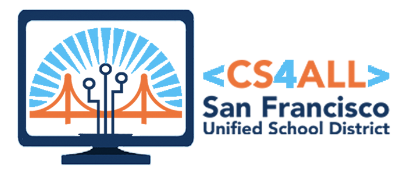
Overview of PD:
Workshop focusing on using Design Practices in Computer Science courses
Where:
Thurgood Marshall High School Innovation Lab (Ilab)

Who:
SFUSD CS Teachers from 11 Middle Schools schools
Why: …
…Before we define What we are doing, lets think about Why we are doing it
So why teach Design Thinking Practices in Computer Science courses? Because:
 (Source: Stanford Design School)
(Source: Stanford Design School)
Consider:

(Source: Stanford Design School)
and

(Source: Stanford Design School)
Rather,
Creative Problem Solving is a set of defined practices (often referred to as Design Thinking), which need to be taught explicitly with students.
Design Thinking is a natural fit for Computer Science courses, as it blends naturally with the study of Computer Science as a way to use computers to solve big problems.
In addition:
- Design Thinking is a common practice in professional engineering, and can be applied to wide range of challenges.
- Design projects provide an application for the skills and concepts taught in Computer Science classes
- Design thinking practices scaffold the process of developing Final Projects in SFUSD’s CS curriculums
- The practices can be spiraled to prepare students for increasing difficulty for each level
What:
This workshop is an introduction to the Design Practices used in the SFUSD computer science curriculum:

The Stanford Design School teaches a very similar set of practices:

While there are slight differences, both use overlapping practices in the Design Process:

How:
This training was a synthesis of a Design Project workshop offered by SFUSD in January 2017 and the D School’s Discover Design Thinking workshop.
11.28.2017 Design PD AgendaBreakout: Timewarp
Our first activity was to escape from a Time Warp using different forms of communication from throughout history (courtesy of Breakoutedu.com). The purpose of starting with a Breakout was for participants to get to experience frustration and failure collectively, and to process how they would manage similar challenging experiences throughout the day.






Design Challenge #1: Redesign the Wakeup Experience
This challenge allows participants to go through the full design process in as short a time as possible. Participants Rapid Prototype a solution to their partner’s morning challenges.
Redesign the Morning Routine (1)



Design Challenge #2: Redesign the New City Experience

This Challenge broadens the scope of a problem beyond an individual to include a larger potential audience. It includes activities to introduce, model and invest participants in the different practices within the design process.
Redesign the New City Experience




Prototyping and Feedback





Ideas for Implementing Design Projects
(Click below to see the full-size Padlet)
Resources
(Click below for access to all Resources from this Workshop)


